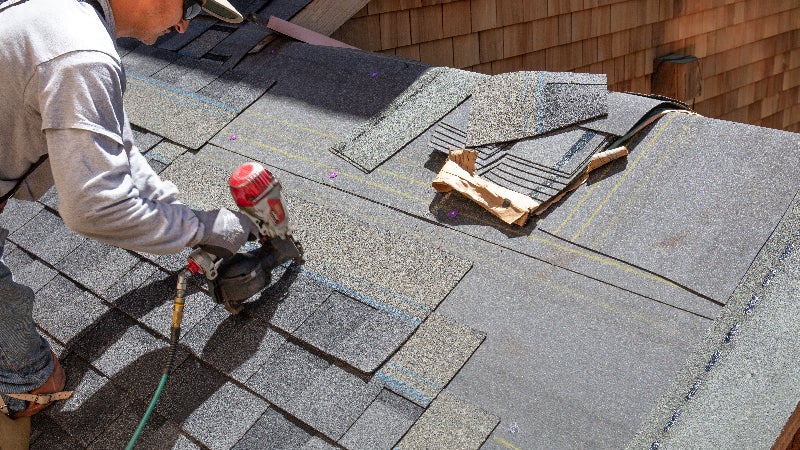Home Roof Replacement: A Comprehensive Guide

Signs That Your Roof Needs Replacement
Age of the Roof
One of the most common reasons for roof replacement is age. Most asphalt shingle roofs last between 20 to 30 years, depending on factors like climate and maintenance. If your roof is approaching or past its expected lifespan, it’s time to consider replacement.
Persistent Roof Leaks
Persistent roof leaks that continue to reoccur despite repairs are a clear indication that your roof’s integrity has been compromised. In such cases, replacing the roof is often a more cost-effective solution than ongoing patchwork repairs.
Visible Damage and Wear
Visible signs of damage such as missing or curled shingles, cracked tiles, or granule loss indicate that your roof has deteriorated and may no longer provide adequate protection. Inspect your roof regularly for these signs of wear and tear.
Choosing the Right Roofing Material
Asphalt Shingles
Asphalt shingles are the most popular roofing material due to their affordability, versatility, and ease of installation. They come in various colors and styles to suit different architectural designs.
Metal Roofing
Metal roofing is known for its durability, longevity, and energy efficiency. It’s resistant to fire, rot, and pests, making it an excellent choice for homeowners looking for a low-maintenance option.
Slate and Tile
Slate and tile roofing offer unmatched beauty and longevity, with lifespans of up to 100 years or more. While more expensive than other options, they provide superior protection and aesthetic appeal.
Steps Involved in Roof Replacement
1. Roof Inspection
Begin the https://www.supermanfanart.com/ with a thorough inspection by a qualified roofing contractor. They will assess the condition of your current roof, identify any underlying issues, and provide recommendations for replacement.
2. Choosing Materials
Once you’ve decided to replace your roof, work with your contractor to select the best materials for your home based on factors like budget, climate, and architectural style.
3. Removal of Old Roof
The next step is to remove the existing roof down to the roof deck. This involves stripping away the old shingles or tiles, inspecting the underlying structure for damage, and making any necessary repairs.
4. Installation of New Roof
With the old roof removed, the contractor will install a new underlayment, followed by the roofing material of your choice. This may involve laying down asphalt shingles, attaching metal panels, or securing slate or tile.
5. Finishing Touches
Once the new roof is installed, the contractor will complete the project by installing flashing around chimneys, vents, and other protrusions, as well as adding ridge caps or hip caps for added protection and aesthetic appeal.
Cost Considerations
Material Costs
The cost of materials will vary depending on the type and quality of roofing material you choose. Asphalt shingles are the most affordable option, while slate and tile roofing are more expensive.
Labor Costs
Labor costs will also factor into the total cost of roof replacement. This includes the cost of removing the old roof, installing the new roof, and any additional work such as repairs to the underlying structure.
Additional Factors
Other factors that may impact the cost of roof replacement include the size and complexity of your roof, the need for permits or inspections, and any unforeseen issues that arise during the project.
Conclusion
Replacing your home’s roof is a significant investment that can enhance curb appeal, improve energy efficiency, and provide peace of mind knowing your home is well-protected. By understanding the signs that indicate it’s time for a new roof, choosing the right materials, and working with a qualified contractor, you can ensure a successful roof replacement project that adds value to your home for years to come.






